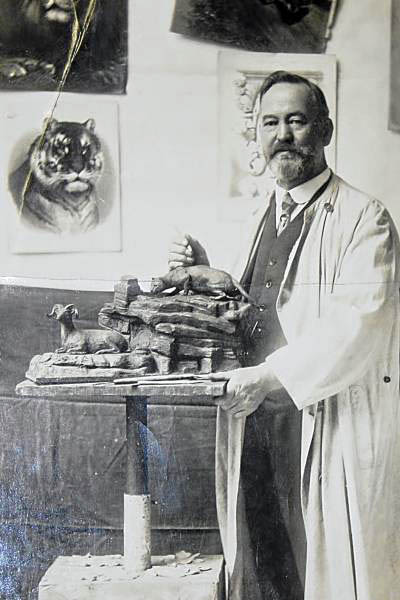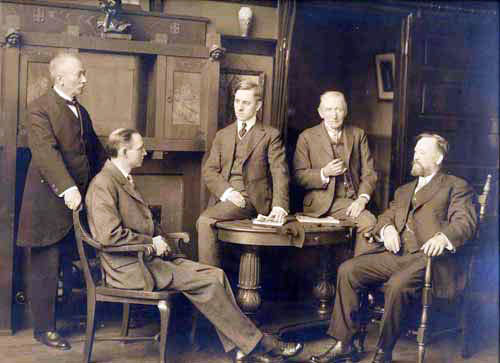Date of Birth: 1858
Place of Birth: Hanover, Germany
Date of Death: 1933
Place of Death: St. Louis, Missouri
Frank Schwarz emigrated from Hanover, Germany where he was well educated and had served as a taxidermy apprentice at the Berlin Museum. He opened the Schwarz Studio, which is well known as the oldest taxidermy business in the United States, in March 1882, in St. Louis, Missouri. The studio has been operating continuously for over 139 years.
Excelling at taxidermy, Frank Schwarz also gathered support of area naturalists and was instrumental in the formation of the St. Louis Zoological Society in 1911, which is known today at the St. Louis Zoo.
The studio was founded by Frank Schwarz, a German immigrant who came to St. Louis with an impressive amount of formal schooling. In his hometown of Hanover, he had spent three years at the Academy of Fine Arts, studying sculpture. He had also studied anatomy at Heidelberg University, and served as a taxidermy apprentice at the Berlin Museum.

After settling in St. Louis, Schwarz worked for Singer Sewing Machine Company, and during his free time, built up a clientele for his taxidermy services.
Schwarz Studio opened for full-time business in March 1882 – the same year that the now-St. Louis Cardinals played their first Major League baseball game. As the taxidermy business grew, so did its need for more space; in 1907, the studio moved into a brick building in Lafayette Square and soon became nationally known.
At the time, African big game hunting had become extremely popular, spurred on by publicity of former U.S. President Theodore Roosevelt’s safaris. Not surprisingly, much of Schwarz Studio’s early work involved turning out big game trophy mounts, and the company’s early clients included such notable names as William Jennings Bryan, Kaiser Wilhelm II, and August A. Busch, Sr. In fact, Schwarz Studio continues to do the work for fourth-generation sportsmen in the Busch Brewery family.

Throughout the studio’s early history, Frank Schwarz’s reputation as a premiere taxidermist and knowledgeable naturalist continued to grow. In 1911, it was Schwarz who brought together nearly a dozen local naturalists at his studio to plan the formation of a St. Louis Zoological Society, known today as the St. Louis Zoo.
As the years passed, Frank began teaching taxidermy to his sons, Max and Paul, who helped in the studio. They also eventually took sculpture classes and learned to sculpt realistic-looking forms that they needed for taxidermy. The finished result, a mount that looked amazingly life-like, further increased the studio’s sterling reputation.
Always on the lookout for creative ways to display taxidermy, Frank early on introduced the use of wood-framed glass bubbles to protect mounts of smaller birds and fish. Featuring hand-painted background scenes, the glass bubbles are an attractive way to display the mounts in virtually airtight protection.
In 1933, Frank Schwarz died and his sons inherited the business, joined by Paul’s son, Paul Jr. The third generation Schwarz began his work in the studio, as had his father and uncle, as an apprentice. When he grew up, however, Paul Jr. followed interests outside the studio, preferring instead to teach and work as a chemist in a foundry. The family’s artistic bent proved to be a strong pull, though, and in the 1950s, he chose to rejoin the business founded by his grandfather.



